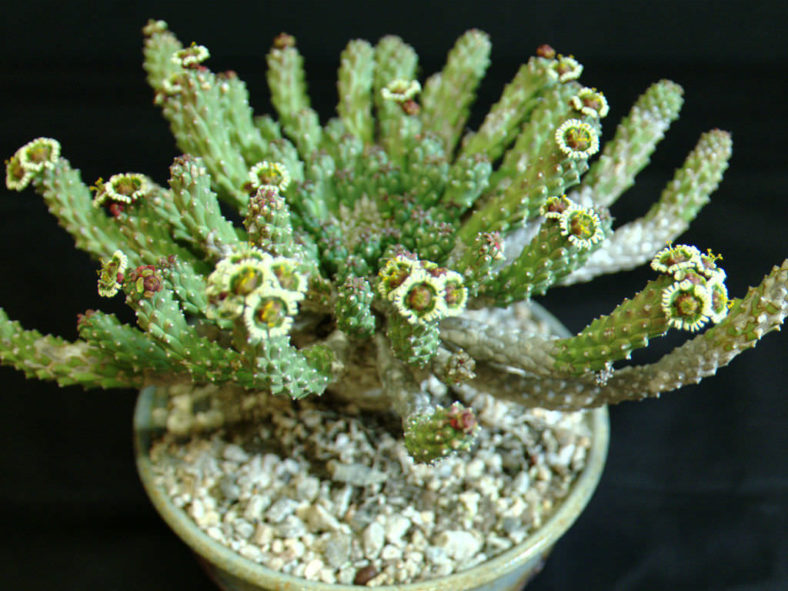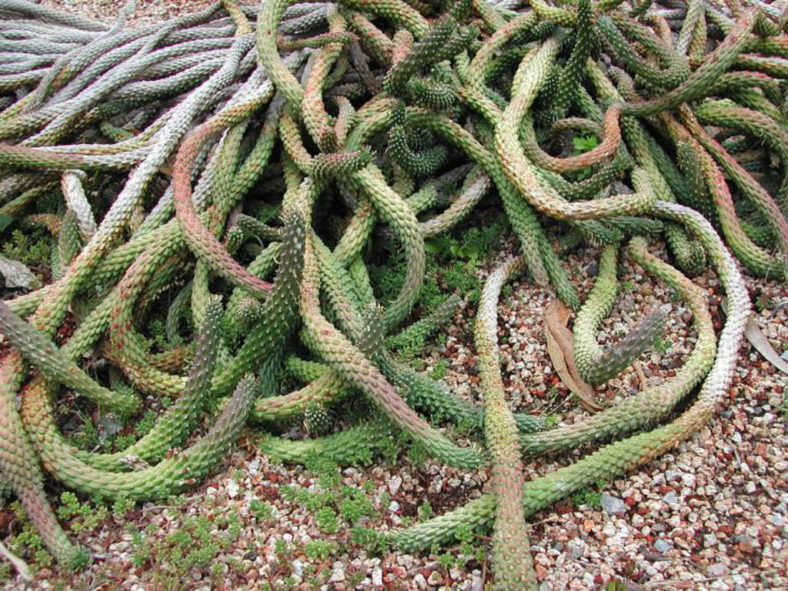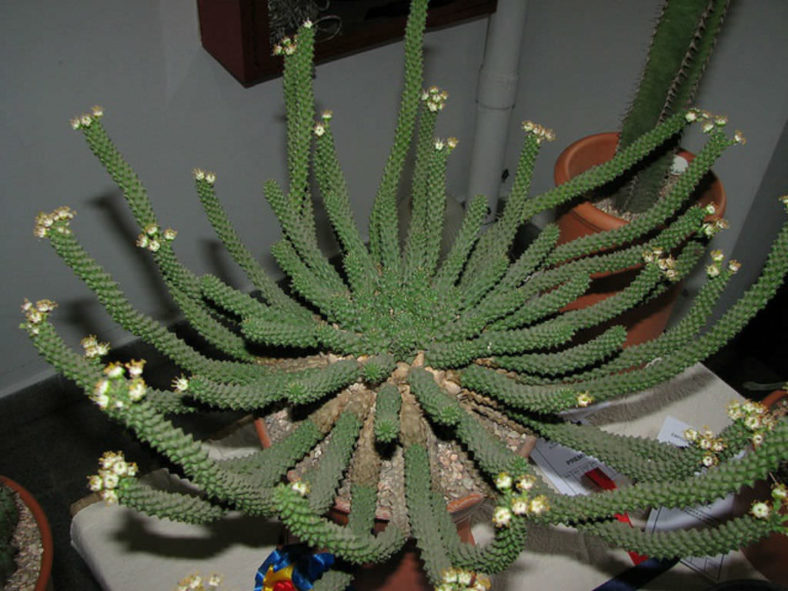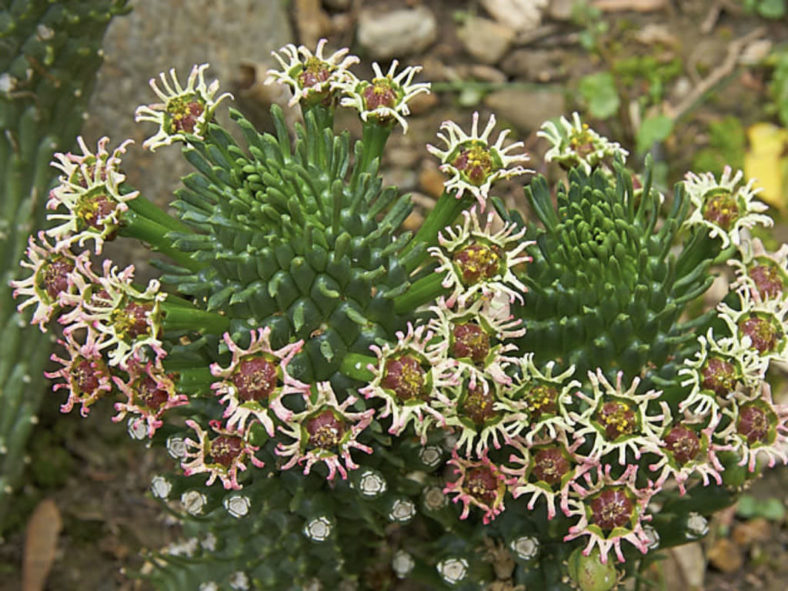Scientific Name
Euphorbia caput-medusae L.
Common Name(s)
Medusa's Head, Medusa Head
Synonym(s)
Euphorbia geminata, Euphorbia medusae
Scientific Classification
Family: Euphorbiaceae
Subfamily: Euphorbioideae
Tribe: Euphorbieae
Subtribe: Euphorbiinae
Genus: Euphorbia
Etymology
The specific epithet "caput-medusae" (pronounced "KAY-put me-DOO-say") means "Medusa's head". It refers to the resemblance of this species to the head of Medusa, one of the three Gorgons in Greek mythology.
Origin
The native range of Euphorbia caput-medusae extends from Oranjemund in the southwestern corner of Namibia to the Cape Peninsula and Mossel Bay in the Western Cape province of South Africa. It grows on sandy flats and stony slopes among scattered bushes.
Description
Euphorbia caput-medusae is a unique succulent plant that forms a rosette of numerous gray-green, snake-like branches from a short, thick, inversely conical stem. It can grow up to 2.5 feet (75 cm) tall and 3.3 feet (1 m) in diameter, while the caudex can measure up to 12 inches (30 cm) in diameter. The branches are ascending, club-shaped, tuberculate, and can reach up to 1.2 inches (3 cm) in diameter, with soon-deciduous leaves at the tips of the tubercles. The leaves are fleshy, linear, and can measure up to 1.6 inches (4 cm) long and 0.08 inches (0.2 cm) wide.
Many cyathia appear in spring and summer around the apex of each branch, each on a sometimes persistent peduncle in the axil of the tubercles. The peduncles can grow up to 0.6 inches (1.5 cm) long. The cyathia can reach a diameter of 0.7 inches (1.8 cm) and have five green glands, each with 3 to 6 cream, often divided processes on the outer margin, covered with small protuberances.

How to Grow and Care for Euphorbia caput-medusae
Hardiness: USDA hardiness zones 9b to 11b: from 25°F (-3.9°C) to 50°F (10°C).
Euphorbias are very easy to care for. These plants require a little pampering to become established, but once they are, they are self-sufficient. In fact, more die from overcare and overwatering than from neglect. Euphorbias need well-draining soil and lots of sunlight. They are not particular about soil pH, but cannot tolerate wet soil. Unlike most succulents, Euphorbia does not tolerate long periods of drought. It may need weekly watering during the summer. Water whenever the soil is dry several inches below the surface. Water deeply, but don't let them sit in wet soil, which can cause root rot. Add some organic matter or fertilizer to the planting hole. If you are growing them in containers or your soil is poor, feed them with a half-strength fertilizer monthly.
These succulents can be grown from seed, but germination can be difficult (or even hard to find). They are usually propagated by cuttings. This can be tricky because of the exuding sap. Rooting hormone is recommended with Euphorbia. They tend to grow problem-free, but there are a few pests and diseases to be alert for.
Learn more at How to Grow and Care for Euphorbia.
Links
- Back to genus Euphorbia
- Succupedia: Browse succulents by Scientific Name, Common Name, Genus, Family, USDA Hardiness Zone, Origin, or cacti by Genus
Photo Gallery
Click on a photo to see a larger version.


